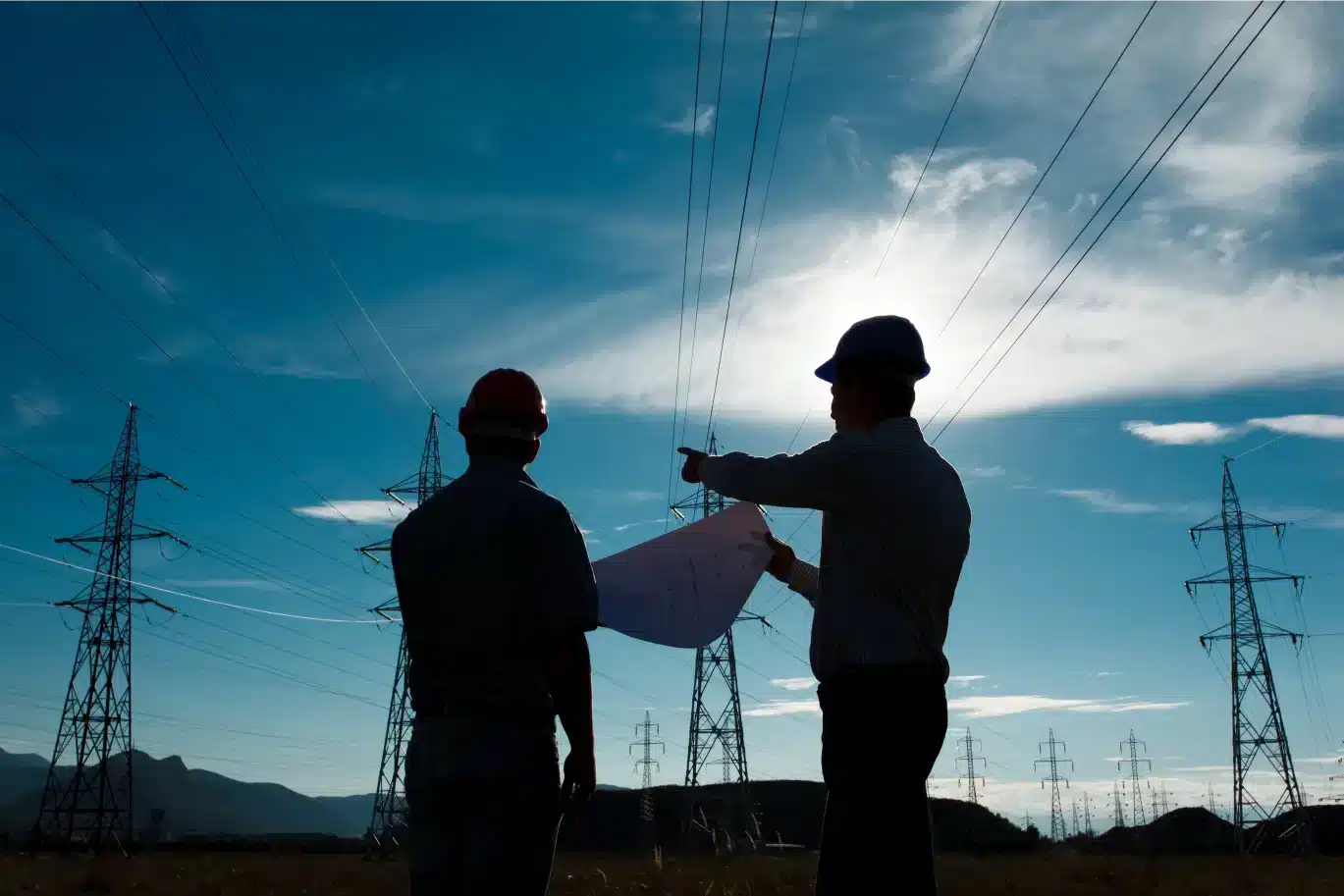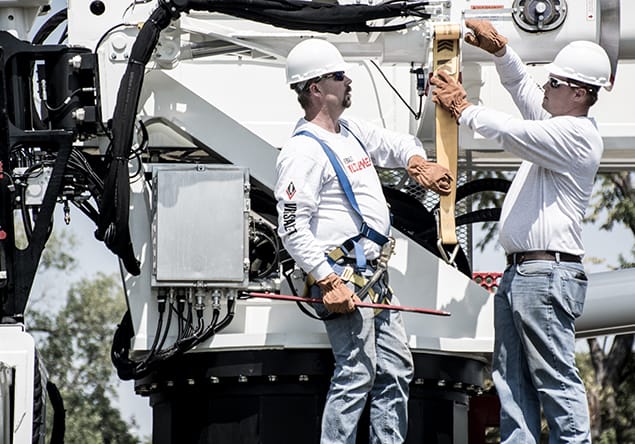Before diving into technical specifications or product features, it’s essential to take a step back and assess your real-world needs. No two job sites are the same — and neither are the demands placed on your equipment. By clearly understanding your operational environment and the tasks at hand, you’ll be in a much better position to choose a digger derrick that delivers the performance you expect.
What Kind of Work Will Your Digger Derrick Perform?
Are you setting telephone poles, digging deep holes for foundations, or handling transformers and other heavy materials? Each task requires a different balance of lifting capacity, boom reach, and drilling torque. A crew installing light-duty poles in urban environments will have very different needs than one working off-road in rural transmission line projects.
Where Are You Working?
Job site conditions play a major role in equipment selection.
How Often Will You Use Your Digger Derrick?
Are you running crews daily with multiple dig-lift-set cycles, or is this equipment used more occasionally? High-usage applications call for heavy-duty components and durable engineering to ensure long-term reliability and safety. Think about the lifecycle expectations of the machine and match that to your workload.
Who Will Operate It?
Don’t forget to consider your crew’s experience level. Some digger derricks are packed with advanced features and custom controls, while others prioritize ease of use. A model that’s too complex or unfamiliar can lead to inefficiencies — or worse, safety risks — if the operators aren’t fully trained or comfortable.

Choosing the right digger derrick means going beyond just brand names and surface specs. It’s about understanding the capabilities that truly impact job performance, safety, and efficiency. Whether you’re lifting poles, drilling holes, or moving heavy loads, here are the most important features to evaluate:
Maximum Lifting Capacity
This is the total weight your digger derrick can lift under ideal conditions. It’s a critical metric if you regularly handle heavy utility poles, anchors, or line equipment. Always choose a capacity that not only meets your needs today — but provides margin for future demands.
Capacity at 10′ Radius
Most lifting work doesn’t happen right at the base of the truck. That’s why manufacturers specify capacity at a 10-foot load radius — a common working distance in real-world scenarios. This spec gives you a better sense of how the derrick will perform when extended, especially during pole handling or material placement.
Load Radius
Closely tied to capacity, the load radius refers to the distance from the center of rotation to the center of the load. The farther you reach out, the more the effective lifting capacity decreases. A digger derrick with strong load charts across various radii offers more versatility on complex job sites.
Horizontal Reach
The horizontal reach defines how far out the boom can extend without repositioning the truck. This is essential in tight workspaces, around buildings, or in rough terrain where mobility is limited. A longer reach can reduce downtime, truck movements, and setup effort — saving you both time and fuel.
Sheave Height
The sheave height is the highest point at which your digger derrick can lift a load. If you’re setting tall poles or hoisting equipment in vertical applications — like transmission lines or comm towers — this measurement is vital. Greater sheave height gives you the flexibility to operate safely at elevation.
Digging Radius
The digging radius refers to the working range within which the auger can effectively drill. A wider digging radius gives your crew more flexibility when positioning the truck — which is especially helpful on tight or uneven terrain. This range also determines how easily you can align boreholes with pole placement, minimizing repositioning and boosting jobsite efficiency.
When choosing a digger derrick, it’s easy to focus on the sticker price. But smart equipment investments go far beyond the upfront cost. To truly evaluate value, you need to consider the Total Cost of Ownership (TCO) — the full lifecycle cost of owning, operating, and maintaining the machine.
Here are 5 key components that influence your TCO:
1. Reliability and Durability
A lower initial price won’t save you money if the digger derrick breaks down frequently. Equipment that’s engineered for long-term performance, will minimize unplanned downtime, reduce repair costs, and keep your crew productive.
Versalift digger derricks, for example, are designed with high-strength components and simplified hydraulic systems, helping ensure longer service intervals and fewer failure points in the field.
2. Maintenance and Service Access
Time spent on maintenance is time away from the job. Look for a digger derrick that offers easy access to service points, modular components, and a support network that can supply parts and technical help quickly.
Reduced maintenance complexity not only lowers labor costs — it also extends the usable life of your equipment.
3. Fuel Efficiency and Powertrain Matching
Chassis and boom performance need to be balanced. A well-matched powertrain not only improves operational control but also contributes to lower fuel consumption, especially on high-duty-cycle applications. Lighter booms and efficient hydraulic systems can significantly reduce your operating costs over time.
4. Long-Term Versatility
A digger derrick that adapts to different job types — with the ability to lift, dig, and set poles in a variety of environments — provides greater return on investment. The more versatile the unit, the fewer specialized trucks you’ll need in your fleet.
Also consider future needs: Will this machine still meet your operational demands 5 or 10 years from now?
5. Uptime and Productivity
Every hour your machine is out of service costs money. A digger derrick that’s designed to minimize service interruptions, speed up job cycles, and maximize uptime directly impacts your bottom line. Time is money — and the right machine helps you save both.
Considering the total cost of ownership is about thinking long-term. It’s not just about getting the job done today — it’s about making sure your digger derrick keeps delivering value, year after year. By factoring in everything from durability and serviceability to resale and efficiency, you can make a confident decision that pays off well beyond the initial purchase.
Choosing the right digger derrick is an investment in productivity, safety, and long-term success. By evaluating job requirements, understanding performance specs, and considering total cost of ownership, you’ll be better equipped to make the right call.
Contact the experts at Versalift today to learn more about our digger derrick solutions and discover how we can help your business operate more efficiently.
Explore related posts to learn more about Versalift’s products, customer stories, industry updates, and how we support essential infrastructure through innovation and service.
Advanced safety features like TruGuard™ and SlopeMax.
Our QA247 is the foundation of every product we assemble.
Heavyweight Performance – Best in class payloads and lighter chassis options.
We design our products with easy maintenance in mind.

Have questions about our bucket trucks or need help finding the right solution? Fill out the form below, and a member of our team will get back to you shortly.